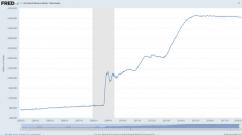White horse (Constellation Pegasus). Constellation Pegasus The constellation together with Pegasus forms a bucket pattern
(lat. Pegasus) - constellation of the northern hemisphere of the starry sky. Located southwest of. It occupies an area of 1120.8 square degrees in the sky and contains 166 stars visible to the naked eye, but only five of them are brighter than third magnitude.
The three brightest stars in the constellation Pegasus, together with the star α, form a large square - a characteristic geometric figure of the constellation Pegasus. Near the western vertices of this square, irregular rows of faint stars are visible, resembling huge tentacles. Still, you need a very rich imagination to see in this figure the mythical winged horse Pegasus, as he is depicted on ancient star maps and star atlases.
PEGASUS belongs to the largest constellations in the celestial sphere. It lies high above the horizon and is best observed at night from August to October. Near Pegasus are the constellations Pisces, the Lesser Horse, and the Lizard.
Stars
The brightest stars in the constellation Pegasus: Enif (ε) - 2.38m and Markab (α) - 2.49m. The fairly bright star Sheat (β) is a semi-regular variable star, the brightness of which varies from 2.4m to 2.8m without a pronounced period.
The translations from Arabic of the names of the brightest stars of the constellation are curious: Markab - “Saddle” or “Cart”, Sheat - “Shoulder”, Algenib - “Navel of the Horse”, Enif - “Nose”.
Notable objects
- α (Markab), β (Sheat), γ (Algenib) Pegasus together with the star? (Alferats) forms an asterism Great Square of Pegasus. There is no star in Pegasus labeled δ; Alferats, located on the border of Pegasus and, was finally assigned to (α) in 1928.
- M15 - large globular cluster near the “head” (ε Peg, Enif) of Pegasus.
- NGC 7331- so-called Seyfert spiral galaxy, the image of which is often used to give an idea of the appearance of our Galaxy.
- 51 Peg is the first solar-type star to have an exoplanet discovered.
- Stefan Quintet- a group of five interacting galaxies.
Interesting star β Pegasus, clearly visible to the naked eye. Until recently, it was considered a variable star of uncertain type. As a result of systematic observations, it was proven that this is an irregular variable star, the luminosity of which varies from 2m.4 to 2m.8, but no pattern in the change in its brightness was discovered. This star, which is a red giant, appears to be an interesting object for observation and research.
There is a radiant in the constellation Pegasus near the star λ Pegasid meteor shower, observed from July 19 to July 31. The maximum of this flow is not associated with a specific date, but with a time interval of five days (from July 24 to July 29). Regular observations of this interesting meteor shower are advisable.
Story
Ancient constellation. Included in the starry sky catalog "" under the name "Horse".
In Greek mythology, a winged horse born from drops of the blood of Medusa the Gorgon. The Babylonians called this constellation simply " horse", among the ancient Greeks - Big Horse. The Arabs still call the constellation Big Horse- Al-faras Al-azam.
Searching the sky
The best conditions for observations are in August-September. The constellation in the evening is shown in the summer, above the eastern side of the horizon. By late autumn it has already risen to a considerable height. It is usually found as a continuation of the chain of stars to the west. The last star on the left of this chain is Alferats (α) is the northeastern corner of the asterism Great Square of Pegasus.
In ancient drawings this constellation is depicted “upside down”. Neck and head of the “horse” - a chain of stars from the southwestern corner Square, Markaba to Enif. Two chains of stars extending from Shat are his “front legs”.

click on the image to enlarge it
| Lat. Name | Pegasus |
|---|---|
| Reduction | Peg |
| Symbol | |
| Right ascension | from 21 h 03 m to 0 h 08 m |
| Declension | from +1° 45’ to +36° 00’ |
| Square | 1121 sq. degrees |
| Brightest stars (value< 3 m) |
|
| Meteor showers |
|
| Neighboring constellations |
|
| The constellation is visible at latitudes from +90° to -54°. The best time to observe is February. |
|

Constellation Pegasus from the Atlas "Uranographia" by John Hevelius (1690)

Constellation Pegasus from the Atlas "Uranographia" by J. E. Bode (Berlin 1801)
click on the image to enlarge it

Constellation Pegasus from the Atlas "Urania's Mirror" (London, 1825)
Mythology
The winged horse, the offspring of Medusa the Gorgon and Poseidon, was born from Medusa when he cut off her head.
Eratosthenes, however, deprives the constellation Pegasus of the honor of being Pegasus, because, he says, Pegasus is winged, and this constellation (which at that time was called simply “Horse”) is wingless.
Hyginus attributes to Pegasus variations on the theme of Thea, which, of course, are more appropriate for the Small Horse. As an argument, he cites an astronomical fact: the lower part of the body of the celestial horse is indistinguishable - so that it cannot be recognized as a woman. The argument is compelling, but not sufficient.
| –0,10 |
Table 1
Interesting objects
The Pegasus Major Square asterism, consisting of the bright stars α Pegasus (Markab), β Pegasus (Sheat) and γ Pegasus (Algenib), as well as α Andromeda (Alpherats) is widely known as the Ursa Major Dipper asterism. In outline, these two constellations - Pegasus and Andromeda - surprisingly resemble the constellation Ursa Major. Only the handle of the bucket is represented by the stars of the Andromeda constellation β (Merak) and γ (Almak).
The globular cluster M15, located 34,000 light-years away, is one of the most beautiful in the Northern Hemisphere.
It is one of the most unusual globular clusters known. There are about 6 million stars in it. With a distance to the cluster of 14 kpc, its linear diameter is about 11 parsecs and it has a very high density of stars. The average distance between stars in the cluster is about 10,000 AU. e., and in the center of the cluster there is another order of magnitude – two less. (In the vicinity of the Sun, the average distance between stars is about 1 pc or 200,000 AU). With such a concentration of stars, they strongly interact with each other, which leads to the gradual “evaporation” of the cluster: fast stars leave the cluster, and the cluster itself becomes very dense towards the center. This is exactly what is observed in the M15 cluster, which indicates its great age. The great age of this cluster is indicated by the absence of young hot stars and gas from which new stars could form. Astronomers have learned to determine the age of clusters quite accurately; it turned out that M15 is one of the oldest star clusters; it is about 15 billion years old; some scientists estimate its age at 18 billion years. That is, the age of this cluster is comparable to the age of the observable Universe. A very strange result. Many astronomers see in this contradiction an indication of a revision of the entire modern theory of the structure and evolution of the Universe.
The constellation Pegasus is also home to the spiral galaxy NGC 7331 and a group of interacting galaxies better known as Stefan's Quintet.
An extrasolar planet with a mass of 0.47 M has been discovered around the star 51 Pegasi. The star HD 209458, which is located 150 light-years away in the constellation Pegasus, is orbited by the extrasolar planet Osiris.
Infrared radiation was detected from this planet. Osiris revolves in an almost circular orbit with a radius of 7 million km, i.e., it is located closer to the central star than the planet Mercury closest to the Sun. Its surface temperature is at least 10,000 degrees. Osiris has a mass of 100 M.
origin of name
According to ancient Greek myths, the winged horse Pegasus flew out of the body of the Gorgon Medusa killed by Perseus. Pegasus was a marvelous horse with snow-white wings that could carry its rider through the air above the mountains and seas. Pegasus became the favorite of the nine muses, the daughters of Zeus and the goddess of memory Mnemosyne. On high Parnassus, the god Apollo leads round dances with the muses and accompanies them singing on a golden cithara. The muse of epic poetry Calliope, the muse of lyric Euterpe, the muse of love songs Erato, the muse of tragedy Melpomene, the muse of comedy Thalia, the muse of dance Terpsichore, the muse of history Clio, the muse of astronomy Urania and the muse of sacred hymns Polyhymnia, they all fell in love with the winged horse Pegasus. Pegasus became the horse of writers and poets, on which they ascend to Parnassus, to the god Apollo and the muses.
The constellation Great Horse began to be called Pegasus during the Roman Empire. The Arabs preserved it under the name Big Horse - Al-faras Al-azam. As the famous astronomer K. Flammarion says, perhaps the severed horse head is a forgotten trace of the sacrifices of these animals that existed in Egypt and China. On Chinese star globes in this place there is the star group Tien-Kiu, or Celestial Stable. Since these stars culminated at night in the spring, at a time when the stables were cleaned, wiping them with sacred horse blood, this gives reason to assume the Chinese origin of the name of this constellation. In fact, the same sacrifices were adopted by the ancient Persians and Hindus and are known among them under the name Asvameda, which comes from the words aswa (horse) and meda (sacrifice). And this word sounds very similar to the ending in the word Andromeda. Thus, the constellations Little Horse, Pegasus and Andromeda have common ancient roots that go back centuries.
The star α Pegasus Markab means “horse saddle”, γ Pegasus Algenib means “wing on the side”, and β Pegasus Sheat means “horse shoulder”.
Pegasus and Andromeda
Prepared by: website
09-09-2012, updated 12-10-2013
On early autumn evenings, two large constellations can be observed in the eastern part of the sky - Pegasus and Andromeda, occupying a total area in the sky equal to 1843 square degrees. The main part of the Pegasus constellation is a large square, indicated by four stars from magnitude 2.1 to 2.8, with the brightest star of the square, located in the upper left corner, being the star α Andromeda and called Alpheraz, derived from the Arabic word "faras" (horse). In theory, a star with this name should be the alpha of the constellation Pegasus (a winged horse in ancient Greek mythology), but in 1928 clear boundaries of the constellations were drawn that Alpheratz was “annexed” in favor of the constellation Andromeda.
However, both constellations are connected to each other by the same ancient Greek mythology, when Perseus, in order to save the princess Andromeda, cut off the head of the monster - the gorgon Medusa, and the winged Pegasus jumped out of her body (according to another version, Pegasus was born from the blood of Medusa that fell to earth). All three constellations are located in one, albeit very vast, area of the sky, and in the constellation Perseus, with the proper imagination, you can find that same severed head of Medusa, one of whose eyes... winks!
 So, Pegasus and Andromeda closely border each other in the sky, forming a huge “bucket”, which is 2-3 times larger in area than the famous “bucket” of the Big Dipper, and therefore is probably not so obvious. However, it all depends on how you draw the “handle” of this “bucket”: either include in it the three stars of the Pegasus constellation located to the west of its “square”, excluding the chain of four bright stars of Andromeda, or, conversely, exclude three stars of the “handle” of the Pegasus bucket, leaving four Andromeda stars as it. It turns out this mysterious bucket with two handles at once.
So, Pegasus and Andromeda closely border each other in the sky, forming a huge “bucket”, which is 2-3 times larger in area than the famous “bucket” of the Big Dipper, and therefore is probably not so obvious. However, it all depends on how you draw the “handle” of this “bucket”: either include in it the three stars of the Pegasus constellation located to the west of its “square”, excluding the chain of four bright stars of Andromeda, or, conversely, exclude three stars of the “handle” of the Pegasus bucket, leaving four Andromeda stars as it. It turns out this mysterious bucket with two handles at once.
As we have already noted, you can find Pegasus and Andromeda on autumn evenings in the eastern part of the sky. During the autumn night, both constellations rise higher and higher until they pass the upper culmination above the point of the south, after which, by morning, they descend in the western half of the sky. At the end of autumn - beginning of winter, the constellations are clearly visible in the early evenings high in the southern part of the sky, and by the end of winter, as the Sun moves through such constellations as Capricorn and Aquarius, Pegasus is already lost in the bright rays of the evening dawn, while Andromeda with the onset of darkness located in the western part of the sky. In spring, the Andromeda star can be found low in the northern part of the sky, because at the latitude of Moscow most of the constellation is non-setting. And from the beginning of summer, on white nights, the constellation of Andromeda and Pegasus can be observed in the morning in the northeastern - eastern part of the sky.
To search for the constellations Pegasus and Andromeda, you can use the attached search map.

Search map of the constellations Andromeda and Pegasus
What novice astronomy lovers can observe in the constellations Pegasus and Andromeda. Let's start with Andromeda, which is home to the famous Andromeda galaxy, designated in astronomical catalogs as M31. Finding this galaxy is very easy, especially if you have ordinary binoculars (or a telescope). But to do this, you need to learn how to find the constellation Andromeda in the sky, and also know in which part of it this brightest galaxy in the northern sky is hidden. And you can find M31 to the northwest of the stars ν and μ Andromeda. A person with normal vision on moonless nights far from city light can see this nebula even with the naked eye in the form of a small foggy cloud, because the brightness of the famous galaxy is 4.3m. But if you have poor eyesight or are bothered by strong urban sky light, at least use theater binoculars, through which you will see the same “small heavenly cloud,” so called by the Arab astronomer Al-Sufi back in the 10th century. n. e.

Amateur shot of M31.
Of course, Al-Sufi and his contemporaries did not know about the true nature of this “celestial cloud”, which was established in 1924 by the famous American astronomer Edwin Hubble, who first noticed in photographs taken with a 2.5-meter reflecting telescope Andromeda nebula individual stars. Thus, the majestic nature of this mysterious nebula was revealed to humanity, which turned out to be a separate star world - a galaxy similar in structure to our Galaxy. Thus, the Andromeda Galaxy lies outside our star system, and therefore is the most distant object in the Universe accessible to the naked eye.
Modern photographs show that M31 is so large in its angular dimensions that it occupies an area of the sky almost 70 times larger than the full Moon! But the glow of its periphery is so weak that the human eye sees only its central, brighter part with a diameter of only half the lunar disk.
More experienced telescope observers may notice that the Andromeda galaxy is not alone: it has two satellites - galaxies M32 and M110. But if there are no special problems with finding M32 through a telescope (it is visible as a faint nebulous star next to M31), then to detect the rarefied glowing “spot” of M110 you will need a very dark night with a transparent atmosphere. But as soon as you see all three galaxies, you will be surprised by this majestic and beautiful picture, because not a single photograph, even the highest quality one, can cause such delight as your own observations.
Having observed the M31 galaxy in the sky, now look for another deep space object - the globular star cluster M15 (or NGC 7078), visible in the constellation Pegasus and located approximately 4° northwest of the orange star Enif (ε Pegasus, magnitude 2.4m) , which is the tip of the handle of the large Pegasus ladle. The brilliance of this globular star cluster is 6.2m, so it is clearly visible even in binoculars in the form of a small, nebulous, rounded spot with an angular diameter of 15 arcminutes. However, in fact, this is a huge swarm of stars, located at a distance of 33.6 thousand light years from us! M15 is one of the densest globular clusters in our Galaxy and consists of more than 100,000 stars.
The cluster's core has undergone compression (a phenomenon known as "core collapse") and has a central density peak surrounded by a huge number of stars and possibly containing a black hole.
M15 contains a fairly large number of variable stars, 112 of which are located in the core. At least 9 pulsars have been found in the cluster, including one possible double pulsar system. M15 also contains four planetary nebulae, the first of which (Pease 1) was discovered in 1928.
If you have already learned how to find the constellation Pegasus in the sky, try using binoculars (or a small telescope) to find M15 along the continuation of a mental straight line drawn from the star θ Pegasus through ε of the same constellation.
Also be sure to look for the star 51 Pegasus with binoculars. In appearance it is an inconspicuous yellow star +5.5 stars. led But it has an interesting history. The fact is that in 1995, astronomers Michel Mayor and Didier Queloz discovered the first exoplanets in the history of astronomy orbiting a star. And this star just became 51 Pegasus! But despite the similarity of 51 Pegasi to our Sun, the discovered exoplanet is hardly similar to Earth. It is significantly larger than our planet, and a year on it lasts only... 4.25 Earth days!

Search map of 51 Pegasus (C) Sky & Telescope, adapted from the website
In conclusion of our review, it is worth mentioning the beautiful double star γ Andromeda, named by Arab astronomers after Alamak. Already in small amateur telescopes it is clear that the main, yellow with an orange tint star 2m has a hot blue satellite at a distance of 10 arc seconds - a star 5m. It is worth noting that the satellite in turn is a binary star with a distance between the components of only 0.3 arcseconds, which makes them indistinguishable to amateur instruments.
Observers of variable stars should pay attention to the Andromeda star, which changes its brightness between 3.5m and 4.0m. The star β Pegasus, located in the upper right corner of the Pegasus “square,” also changes its brightness in the range from 2.4m to 2.8m. This is a typical irregular variable star.
These are the interesting objects that astronomy lovers can observe using the most modest optical instruments in the two main constellations of the autumn sky.

Andromeda on a modern star map

Andromeda on a modern star map
When preparing the article, materials from the book “Treasures of the Starry Sky” by F.Yu. Siegel, Wikipedia..
Ah, Pegasus! For those observing with the naked eye, the Great Square of Pegasus is a characteristic feature of the autumn sky in the Northern Hemisphere. Oddly enough, not all the stars from the "Pegasus Greater Square" are in Pegasus: the northeastern star is Alpha Andromedae. At one time, Alpha Andromeda was attributed to both constellations, but when drawing up the official boundaries of the constellations, the Great Square gave Andromeda one of its “cornerstones” - Alferaz.
No question, Andromeda will be happy to return it if necessary.
Pegasus spans 1,121 square degrees of the sky: it is the seventh largest constellation in the entire sky. Yet, due to its position overlooking intergalactic space, there are quite a few bright objects for owners of small telescopes. If you are lucky enough to have an average telescope (8 inches and above), then Pegasus will keep you busy for a long time.
| List of objects | Name | Type | Sound magnitude |
| M15 | globular cluster | 6,3 | |
| NGC 7331 | galaxy | 9,5 | |
| NGC 7479 | galaxy | 10,9 | |
| NGC 7814 | galaxy | 10,8 | |
| NGC 7619 | galaxy | 11,1 | |
| NGC 7626 | galaxy | 11,2 | |
| Complex object | galaxy cluster |

The winged horse Pegasus is a rather intricate creature, especially if you consider only its front half in the night sky: both upside down and upright... If you find it difficult to see the horse in this constellation, believe me, you are not alone. But give it another try. Firstly, if you are in the Northern Hemisphere, your picture is upside down. Refer to the image below and notice that south now matches your upside-down view. Green lines are the neck and head, red is the body (without wings) and blue is the horse's front legs, extended in full gallop. Historically, we can trace Pegasus back to the ancient Greeks. He was the child of Medusa and was born from her neck after she was killed by Perseus. I think that science fiction and fantasy as a “new invention” should be very grateful to the ancients...
 Thanks to Walter Scott Huston (author of “Deep Sky Wonders”), I was first introduced to the idea of using Pegasus as a test for the maximum magnitude visible to the naked eye. Huston writes that by counting the stars visible in the Great Square, you can determine your limiting magnitude. He notes that at magnitude 6 you should see 13 stars in the square. I think it would be fun to continue this scale. I suspect that many readers of this column have a sky worse than six.
Thanks to Walter Scott Huston (author of “Deep Sky Wonders”), I was first introduced to the idea of using Pegasus as a test for the maximum magnitude visible to the naked eye. Huston writes that by counting the stars visible in the Great Square, you can determine your limiting magnitude. He notes that at magnitude 6 you should see 13 stars in the square. I think it would be fun to continue this scale. I suspect that many readers of this column have a sky worse than six.| Col. stars | Ultimate stellar |
| 30 | 6.5 |
| 17 | 6.25 |
| 13 | 6 |
| 9 | 5.75 |
| 7 | 5.5 |
| 5 | 5.25 |
| 4 | 5 |
| 3 | 4.75 |
| 1 | 4.5 |
| 0 | 4 and worse |
Let's take a look at the three corners of the Great Square that are actually in Pegasus. Starting at the southeast corner and moving counterclockwise around the square, we have:
Gamma Pegasus (Algenib) with a magnitude of 2.83, it is the third brightest star in the constellation. According to the Hipparchus satellite, it is located 333 light years away. So the light you see tonight left this star around 1670 ( note: article written in 2003). I give you an idea of the events of 1670: the Hudson Trading Company was founded; the kings of England and France met secretly to sign an agreement ending hostilities between their countries (at least for a while); phosphorus was discovered; Senegal was settled by the French; the Cossack uprising in Ukraine was suppressed; Henry Morgan captured Panama.
Alpha Pegasus (Markab) has a magnitude of 2.49 and is only 139 light years away ("Hipparchus" again) - the closest of the three. This means that the photons that will hit your eyes tonight were emitted around 1864. This year saw the continuation of the American Civil War, the entry of the Montana Territory into the United States, the death of 70,000 people from a cyclone that hit Calcutta, James Clerk Maxwell's discovery of microwave radiation, the death of Alfred Nobel's younger brother Emil while experimenting with nitroglycerin, the birth of American millionaire Jacob Astor and famous French artist Toulouse-Lautrec.
Beta Pegasus (Sheat) with a magnitude of about 2.4, it is located 199 light years away. 1804 marked the end of French rule in Haiti, the beginning of the first Barbary War, the advent of the first steam locomotive, the Louisiana Purchase, the beginning of the Louis and Clark expedition, Bonaparte proclaimed himself emperor (the first emperor of France in 1000 years), Spain declared war on Great Britain, and the German astronomer K L. Harding discovered the asteroid Juno. Think about what humanity is going through the moment you look back into the deep orange color of Sheat. Astronomy can become your personal time machine. But these targets are some of the closest we'll visit tonight. The rest of our stops, with one exception, will be in the depths of intergalactic space.
Fun fact: Andromeda's alpha (Alferaz) was also known as Pegasus's delta until Pegasus lost in a celestial tug-of-war...
Pegasus is not entirely devoid of bright objects, containing three Caldwells and one Messier. These objects are visible in fairly small telescopes (especially the M15), but you're truly lucky if you've already succumbed to the mind- and wallet-scarring disease of aperture fever and bought a telescope 8 inches in diameter or larger.
So, without further ado, let's continue our tour...
NGC 7814 (Caldwell 43)

First, let's stop two degrees west-northwest of the Pegasus gamma - at the galaxy NGC 7814 whose gloss is 10.5. It looks spectacular in the picture, but owners of a small telescope will have to be content with finding a small ball of cotton wool floating in intergalactic space.

If you have a larger telescope, be careful not to settle on NGC 14. This 12th magnitude galaxy may briefly confuse you as it lies almost exactly between 7814 and gamma, but at magnitude 12.2 it is much dimmer (at compared to 10.8).
In very, very dark areas, the galaxy can be seen in a small 4" telescope, but I usually need at least 6-8" to pick it out. Oddly enough, the Night Sky Users Guide mentions 7814 as a binocular object. I have my doubts, but I have to admit that I've never actually tackled it with binoculars. Perhaps one of you can tell me the smallest aperture with which you can isolate this dim galaxy. Can you really spot it with binoculars? As with other faint galaxies, try to minimize light pollution when searching: even the Moon can seriously affect your ability to see it. Once you find it, try alternating between high and low magnifications and note the results.
You need to know that the size of a galaxy indicated in the catalog is not necessarily the best indicator of its visibility. Cataloged quantities can actually be (and often are) photo quantities, and the sensitivities of the emulsion film and the human eye differ. In addition, the magnitude describes the brightness of an object compressed into a point, such as a star. And the light from galaxies is distributed over a larger region of the sky. The best indicator of a galaxy's visibility is its surface brightness, usually measured in magnitudes divided by square arcseconds—the brightness of a unit area. However, never give up on looking for objects with low magnitude or surface brightness - you may be surprised!
NGC 7479 (Caldwell 44)

And now - to one of my favorite galaxies in Pegasus, NGC 7479. Continue along the base of the Great Square until you reach the alpha, then move three degrees south.
This very nice barred spiral galaxy serves as an excellent illustration of what can be done with a large aperture and a dark sky. As the diameter of the telescope increases, it reveals more and more detail. In a small telescope you need to look for a symmetrical beam of light, which can resemble an edge-on or lenticular galaxy; larger telescopes will begin to show more and more detail. The image on the left is very similar to the view through my 18" telescope at ~200x magnification in a dark area - a stellar core, an obvious bar and two clearly visible arms.

The drawing shown in Caldwell Objects by Stephen James O'Meara is also very similar to the DSS image above. Surprisingly, he observed with a modest 4-inch telescope. It's worth considering that this was under the perfect Hawaiian sky, but still, it just goes to show what dark skies (and excellent, well-trained eyes) can achieve.
NGC 7619 and the Pegasus I galaxy cluster.

Let me say right away that this goal is not that good. It really should have been classified as a complex object, but this month I wanted to reserve that category for something special. So don't be discouraged if you can't find it, but if you can, let your mind become aware of what it is you are seeing. This is a fairly loose cluster of galaxies located approximately 250 million light years away. Everything's right 7619 - the center of the Pegasus I galaxy cluster.

If you look closely, you'll find galaxies scattered across multiple fields of view, with the brightest being NGC 7619 (center) and NGC 7626 (left), so you have a good chance of picking them out. I wasn't quite able to handle them with a 4-inch telescope, but my friend Ron Bee snatched them both, plus NGC 7611.
No doubt an impressive feat for a 4" telescope. Point every aperture you have at this galaxy cluster and see what you can see. Take notes and then compare with the DSS image above. Be sure to take time to adjust your eyes to complete darkness. You can try putting your head under a dark towel or sheet while observing to block out all extraneous light. When scanning the field, use your peripheral vision and move the telescope very slowly (we perceive dim objects a little better if they appear to be moving). After all, who cares what the neighbors think?!
M15

Typically, I like to start an observing session with an exciting object like M15, move on to the dull fluffs, and after my eyes get used to looking for dull targets, end the observation with a pair of bright pearls. After all those dim, colorless galaxies, M15 is a sensation to the eye.

In dark terrain, the M15 is an object to the naked eye and an easy target for almost any binocular. With my 4" refractor, the best view is at 100x with a field of view of just under a degree. I like to add magnification as the aperture increases. When I get to larger telescopes, I like to split that ball into pieces at 400 or 500 magnification!
How much magnification will your telescope need before the cluster appears resolved across its entire surface? And will this happen at all?

M15 hides a prize for the keen observer - a very special planetary nebula! Pease 1, discovered by Francis Pease in 1928, was the first planetary nebula ever discovered in a globular cluster. Pease 1 is located so far away that it appears starry in an amateur telescope at any magnification. The only real way to identify her is to aim at her specified location and then flash the OIII filter. Planetary nebulae have high emission in the OIII range, so when the rest of the stars dim, the one that remains bright is the planetary nebula. Most observers who mention seeing Pease 1 have found it with large apertures (12" or larger), but there is evidence that it has been captured in 8" telescopes. If you are interested in Pease 1, be sure to visit the site mentioned in the list of links in end of the article.
NGC 7331 - Deer Lick group (aka Caldwell 30)

Welcome to one of the best galaxies in the autumn sky (and also to the group of galaxies). This galaxy is used in astronomical texts to illustrate what the Milky Way would look like from a similar point. NGC 7331- without a doubt the dominant member of the "Deer Lick Group", which apparently got its name in memory of a magnificent observation night on a patch of salt marsh where deer licked salt (called the "Deer Lick"), near the park's Blue Trail Ridge in the mountains of North Carolina.

I can easily see it in a 4" telescope at 40x and note "...a fantastic needle that shows a slight distinct mosaic" at higher magnification. 7331 looks spectacular on its own at any aperture, but larger telescopes provide glimpses of its surroundings. With a large enough aperture, it becomes like Gulliver surrounded by an army of Lilliputians. Looking at it through a 15-inch telescope, I noted, “This mag 9.5 Sb galaxy is simply superb... The 99x magnification makes it stand out beautifully in its surroundings and even shows hints of a sort of dust lane on the western side from time to time. The core itself appears non-stellar and perhaps even a bit mosaic. Adding magnification to 243x further darkens the sky and reveals the featureless NGC 7335 and NGC 7337 . Be sure to look NGC 7336, which masquerades as a double star. Its “companion,” a 10th magnitude star, is nearby to the north.”

It is within the capabilities of any telescope; in the book “Caldwell Objects,” O’Meara says that NGC7331 is among the largest known galaxies. Its diameter (based on a distance of 47 million light-years) is 130,000 light-years, which is equal to the size and mass of the large Andromeda galaxy, M31.

This is a fairly bright galaxy and should be easy to pick out when scanning the sky, but choosing a starting point for your search may be difficult. Fortunately, there is a solution. If you can see Pi and Eta with the naked eye, imagine a right triangle. 7331 is located right at the 90 degree angle. If you can't see these stars with the naked eye, you can use the star trail method, start with beta and "round the corner," so to speak. Whichever method you choose, you won't lose - 7331 is worth the effort.
Besides being a beautiful object in its own right, 7331 is the starting point for this month's final, challenging object.
Complex object: Stephan Quintet

- 5 galaxies squeezed into 3.5" of sky that are on any serious deep sky observer's list. Unfortunately, even the brightest of the group, NGC 7320, is quite dim: its magnitude is 12.5. In moderately dark areas I have seen all 5 galaxies in a 10" telescope, so under decent skies 7320 should be visible in a smaller telescope. But ultimately, you won't know until you try it yourself.

Fun fact: Something of a rising screen star, the Stephen Quintet was used to portray a group of angels in the 1946 Christmas movie It's a Wonderful Life. Some may find this group a bit challenging for the typical small telescope owner, but I am constantly surprised by the information I receive from various people: some seem to get to difficult objects with little to no difficulty, so I suggest answering the following questions:

What is the smallest telescope that will allow you to discern at least one of Stefan's stars? With what smallest telescope can you see all 5 members of the quintet? If you see the quintet in its entirety, you've climbed one of amateur astronomy's coveted peaks. Congratulations!
 Posted by Tom Trusock
Posted by Tom Trusock Adapted translation from English website
Published with permission of the author.
Original version of the article at
Boundless space has always been of particular interest to people of different ages. The main object of study and observation has been and remains the stars. Billions of small planets forming entire systems attract the attention of the curious. Looking at the night sky and fantasizing, thousands of years ago people saw the outlines of animals in the stars and gave them names. They believed that the sun and planets are gods who, with the help of luminaries, give signs to earthly inhabitants. And it was undeniable that there was a connection between the stars, the Universe and the Earth. Since ancient times, people have learned to tell fortunes and predict by the stars. Then such sciences as astrology (prediction by the stars) and astronomy (the study of the stars) were born.
Constellations
Studying the stars has become a fascinating activity for people. In order to navigate in this vast outer space, the celestial sphere was divided into sections that are constellations. Each was given its own name. In ancient times, clusters of stars were given the names of gods and the names of the animals they resembled. To date, the International Astronomical Union has officially recognized 88 constellations. The most famous groups of stars in the southern hemisphere are Libra, the Southern Cross and Centaur. Famous star clusters of the northern hemisphere: Cassiopeia, Ursa Major and the constellation Pegasus. A photo of the latter, mesmerizing with its beauty, can be seen in the article.
Winged horse in the night sky
In the northern hemisphere of the night sky, 166 stars can be seen with the naked eye, which make up the constellation Pegasus. Next to him are Aquarius, Dolphin, Andromeda, Chanterelles, Pisces, Lizard, Small Horse and Swan. The area occupied by this cluster of stars is 1120 square degrees. This puts the constellation Pegasus in 7th place among all existing ones. For residents of the Northern Hemisphere, the winged horse looks upside down. And that’s why the Pegasus diagram was depicted in ancient atlases. In order to be able to see the image of a horse from the stars, you need to have an extremely developed imagination. Many try to use a trick by photographing the constellation Pegasus, a photo of which for a person with little imagination will still show nothing but a cluster of stars.
How to find a constellation?

If you have knowledge of astronomy and experience in observing stars, then you should know about and what it looks like. Focusing on the chain of stars of this constellation, move your gaze to the west. Take a close look. And behind the luminaries of Andromeda you will see the constellation Pegasus. Another way to find a winged horse is to focus on the Northern Cross, whose stars border it.
The most favorable time to observe Pegasus is autumn and late summer. For people with little experience and knowledge, it will not be difficult to find it in the Great Square of Pegasus.
Interesting facts about the winged horse constellation

All Pegasus are related to the horse. Their names come from Arabic. So Enif in translation means “nose”, Sheat - “shoulder”, Markab - “saddle” or “cart”, Algenib - “horse navel”. The brightest luminaries (Enif, Sheat and Markab) form the Great Square of Pegasus. Actually, anyone can find this constellation using it.
The constellation Pegasus has a distinctive feature: it lacks the star Delta Pegasus. Until 1928, this star, located between Andromeda and Pegasus, belonged to a winged horse. But later they began to attribute it to Andromeda, so Delta Pegasus became Alpha Andromeda.
An interesting fact is that in the constellation there is the source of the Pegasid meteor shower, as well as several galaxies, including NGC 73331. This is a Seyfert spiral galaxy, the image of which is most often used to represent the appearance of our Galaxy.
Myths and legends about Pegasus

There is more than one legend about the constellation Pegasus. In Greek mythology, Pegasus is a snow-white winged horse born of Poseidon and Medusa the Gorgon. After his birth, he began to faithfully serve Zeus, constantly bringing him lightning and thunder. Winged horses were also used by mere mortals, who were gifted by the gods. These beautiful and strong animals served their masters until their death.
According to another version, Pegasus emerged from the blood of Medusa, killed by Perseus.
Another legend about the constellation Pegasus tells that, while walking along Helicon, a winged horse hit the rock with its hoof. And from this rock arose the source of Hippocrene (translated as “the source of the horse”). Anyone who drank water from such a source received inspiration. For this, Pegasus was nicknamed “Horse of the Muses.”
According to another myth, the gods gave a winged horse to the Greek hero Bellerophon. He, having managed to saddle Pegasus, rose into the air on it and defeated the chimera with arrows - a terrible monster with the head of a lion, the body of a goat and the tail of a dragon.
Because Pegasus performed faithful service, the gods raised him to the constellations, forever leaving the image of a winged horse in the sky.













